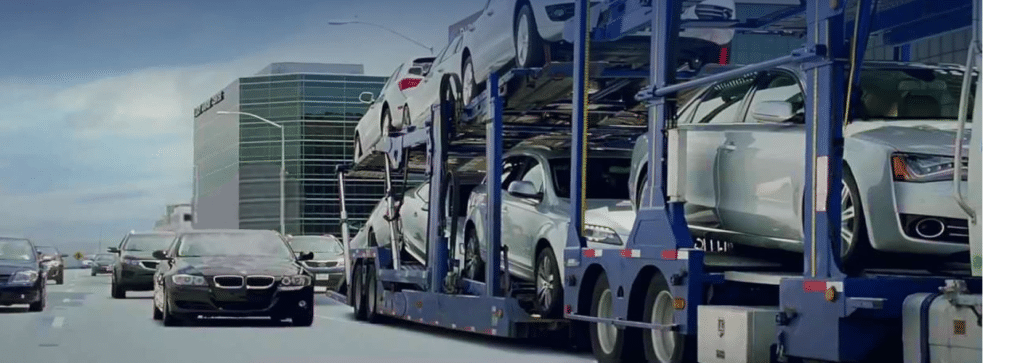Introduction To Electric Cars In Hawaii
Benefits Of Electric Cars For Hawaiian Commuters
Electric cars offer numerous advantages for Hawaiian commuters, making them an increasingly attractive option for those looking to navigate the islands efficiently and sustainably. One of the most significant benefits is the environmental impact. Hawaii’s unique ecosystem is sensitive to pollution, and electric vehicles (EVs) produce zero tailpipe emissions, significantly reducing air pollution and contributing to cleaner air quality. This aligns perfectly with Hawaii’s commitment to achieving 100% renewable energy by 2045.
Additionally, electric cars are cost-effective in the long run. Although the initial purchase price may be higher than that of conventional gasoline vehicles, EVs have lower operating costs. Electricity is cheaper than gasoline on a per-mile basis, and maintenance costs are reduced due to fewer moving parts and no need for oil changes or exhaust system repairs. Over time, these savings can be substantial, providing financial relief for commuters who frequently travel across various islands.
The convenience of charging infrastructure is another advantage that cannot be overlooked. Hawaii has been proactive in expanding its network of charging stations across all major islands. This growing infrastructure ensures that EV owners can conveniently recharge their vehicles at home or at public charging stations during their daily commutes or longer trips.
Furthermore, electric cars offer a quieter driving experience compared to traditional internal combustion engine vehicles. The serene environment inside an EV complements the tranquil beauty of Hawaii’s landscapes, making commutes more pleasant and less stressful.
Lastly, many electric car models come with advanced technological features such as regenerative braking systems, enhanced connectivity options, and state-of-the-art driver assistance technologies. These features not only improve safety but also make commuting more efficient by optimizing driving patterns and reducing energy consumption.
In summary, electric cars provide Hawaiian commuters with environmental benefits, cost savings, convenience through improved infrastructure, a quiet driving experience, and advanced technological features—all contributing to a more sustainable and enjoyable way of life on the islands.
Top Electric Car Models For Hawaiian Roads
Navigating the unique terrain of Hawaii requires a blend of durability, efficiency, and eco-friendliness, especially when considering electric vehicles (EVs). The state’s diverse landscape—ranging from bustling urban centers to serene coastal highways and rugged volcanic regions—demands versatile and reliable transportation options. For Hawaiian commuters, several electric car models stand out due to their performance, range, and adaptability.
Firstly, the Tesla Model 3 is an exceptional choice for island driving. Its impressive range on a single charge allows for worry-free travel between islands’ major cities and scenic spots. Additionally, Tesla’s expanding Supercharger network ensures that recharging is convenient and quick across the state. The Model 3’s autopilot capabilities also add a layer of safety during long drives along picturesque routes like the Hana Highway.
Another strong contender is the Nissan Leaf. Known for its affordability and reliability, the Leaf offers a practical solution for daily commuting in Hawaii’s urban areas such as Honolulu or Hilo. Its compact size makes it easy to navigate through narrow streets while still providing ample cargo space for beach gear or grocery runs. Furthermore, Nissan’s commitment to building a robust charging infrastructure across Hawaii makes owning a Leaf particularly convenient.
The Chevrolet Bolt EV also merits consideration with its remarkable range and spacious interior. This model excels in providing comfort during extended drives around Big Island or Maui while maintaining impressive energy efficiency. The Bolt’s regenerative braking system is especially beneficial on hilly terrains commonly found throughout Hawaii.
Lastly, the Hyundai Kona Electric stands out with its SUV-like versatility combined with electric efficiency. Its elevated seating position offers better visibility for navigating mountainous roads or coastal pathways.
Choosing an EV suited to Hawaiian roads not only supports sustainability but also enhances the overall driving experience amidst some of the world’s most breathtaking landscapes.
Shipping Electric Cars To Hawaii With RAT: What You Need To Know
When it comes to shipping your electric car to Hawaii, RAT Lines stands out as a reliable option. Given the unique challenges and logistics involved in transporting vehicles across the Pacific, understanding the process can help ensure a smooth transition for your eco-friendly ride.
Firstly, it’s essential to grasp the importance of proper preparation. Before handing over your electric vehicle (EV) to RAT Lines, make sure it’s adequately prepped for shipment. This includes fully charging the battery and securing any loose items inside the car. Also, check for any existing damage and document it with photos; this will serve as a reference in case of any claims post-transport.
RAT Lines offers both port-to-port and door-to-door services, allowing flexibility depending on where you are located on the mainland or within Hawaii. For many Hawaiian commuters, having their EV shipped directly from their home or workplace can save time and reduce stress.
Another critical aspect is understanding the cost factors involved. The price of shipping an electric car with RAT varies based on several elements such as distance from port locations, vehicle size, and specific service options chosen. Electric cars often have different dimensions compared to conventional vehicles which may affect overall costs.
One significant advantage of using RAT Lines is their experience in handling EVs specifically. They are well-versed in dealing with electric cars’ unique requirements like battery safety during transport—an essential consideration given lithium-ion batteries’ sensitivity.
Lastly, it’s crucial to be aware of Hawaii’s import regulations concerning vehicles. Make sure all documentation is complete and submitted timely—this includes ownership papers and compliance with emissions standards if applicable.
By choosing a seasoned shipper like RAT Lines and being prepared for each step of the process, you can ensure that your transition to Hawaiian commuting in an electric car is seamless and efficient.
Cost Breakdown: Purchase, Shipping, And Maintenance
When considering top electric cars for Hawaiian commuters, it’s essential to evaluate the overall cost implications encompassing purchase, shipping, and maintenance. Initially, the purchase price of an electric vehicle (EV) can vary significantly based on brand, model, and features. While brands like Tesla offer high-end models with advanced technology and longer ranges, more affordable options from manufacturers like Nissan or Chevrolet provide a balance between cost and efficiency.
Incentives such as federal tax credits or state-specific rebates can substantially reduce the upfront expenditure.
Shipping costs are a unique consideration for Hawaiian residents due to the island’s geographical isolation. Partnering with reliable maritime transport services such as RAT Lines ensures that your EV arrives safely and promptly. Shipping fees can range from $1,000 to $2,500 depending on factors like vehicle size and shipping distance from the mainland U.S., but investing in a reputable shipper guarantees fewer complications and potential damages during transit.
Maintenance costs for electric vehicles differ notably from traditional gasoline-powered cars. EVs generally have fewer moving parts, resulting in reduced wear-and-tear issues over time. Routine maintenance primarily involves tire rotations, brake inspections (thanks to regenerative braking systems), and software updates rather than frequent oil changes or transmission repairs typical of combustion engines. However, battery replacement remains a significant expense; though modern batteries are designed to last several years or even decades under regular use.
Hawaiian commuters should also consider the availability of charging infrastructure across different islands when assessing long-term costs. Fortunately, Hawaii has been expanding its network of public charging stations which alleviates concerns about range anxiety while contributing to lower overall energy expenses compared to fluctuating fuel prices.
By thoroughly examining these financial aspects—purchase price reductions through incentives, calculated shipping via trusted carriers like RAT Lines, and minimal yet crucial maintenance—Hawaiian commuters can make well-informed decisions when transitioning to electric vehicles.
Charging Infrastructure And Availability In Hawaii
Hawaii’s unique geographic and environmental landscape presents both opportunities and challenges for electric vehicle (EV) adoption, particularly when it comes to charging infrastructure. As the Aloha State embraces a more sustainable future, efforts to establish a robust network of EV charging stations have accelerated, providing reassurance to commuters who are considering making the switch from traditional gasoline-powered vehicles.
The state government, in collaboration with private enterprises and non-profits, has made significant strides in expanding the availability of EV chargers across the islands. This includes a mix of Level 2 chargers—ideal for residential areas and workplaces—and DC fast chargers strategically placed along major thoroughfares and popular destinations. These initiatives aim to alleviate range anxiety, ensuring that drivers can confidently travel between urban centers like Honolulu on Oahu or Hilo on the Big Island without fear of depleting their battery.
Moreover, Hawaii’s commitment to renewable energy further complements its EV infrastructure. With an abundance of solar power installations across residential homes and commercial properties, there’s a growing trend towards integrating solar panels with home charging systems. This not only provides a cost-effective solution for EV owners but also aligns with Hawaii’s goal of achieving 100% renewable energy by 2045.
Community engagement is another critical component driving the expansion of charging infrastructure. Local organizations actively promote awareness campaigns about the benefits of EVs and available incentives such as tax credits or rebates for installing home chargers. Public-private partnerships have also played a pivotal role in funding new projects aimed at enhancing charger accessibility in remote areas.
While challenges remain—such as ensuring equitable access to charging stations across all islands—the concerted efforts by multiple stakeholders signal a promising future for electric vehicles in Hawaii. As infrastructure continues to evolve, Hawaiian commuters can look forward to increasingly seamless integration of electric cars into their daily lives, supported by an ever-growing network of reliable charging options.
Testimonials From Hawaiian Electric Car Owners
When it comes to commuting in Hawaii, the unique geography and climate of the islands present both challenges and opportunities for electric car owners. Testimonials from Hawaiian electric car owners reveal that these vehicles are not only practical but also deeply rewarding for island life.
Take Lisa Nakamura, a resident of Oahu who commutes daily from Kailua to downtown Honolulu. “Switching to an electric car has been a game-changer,” she says. “With RAT’s reliable shipping services, I received my vehicle promptly and in perfect condition. The smooth driving experience, combined with zero emissions, makes my daily commute along the scenic Pali Highway even more enjoyable.” Lisa adds that the cost savings on fuel have been significant, allowing her to invest more in local activities and support Hawaiian businesses.
Kauai resident John Kealoha shares a similar sentiment. Living on an island known for its commitment to sustainability, John felt compelled to make an environmentally-friendly choice. “I was initially concerned about shipping logistics,” he admits, “but RAT made it seamless. Now I can drive around the Garden Isle without worrying about harming the environment.” John highlights how his electric car’s regenerative braking system is particularly useful when navigating Kauai’s hilly terrain.
Meanwhile, on Maui, Hana resident Sarah Kim found that her concerns about charging infrastructure were quickly alleviated once she took the plunge into electric vehicle ownership. “The installation of home chargers is straightforward,” she explains, “and public charging stations are becoming more common across Maui.” Sarah also notes how silent driving enhances her connection with nature during her commutes through Haleakalā National Park.
These testimonials underscore how electric cars are well-suited for Hawaiian commuters who value efficiency, environmental stewardship, and a smooth driving experience—all made easier by RAT’s dependable shipping solutions. Whether navigating city streets or exploring rural landscapes, Hawaiian residents find that going electric enriches their daily lives while protecting their island paradise.









